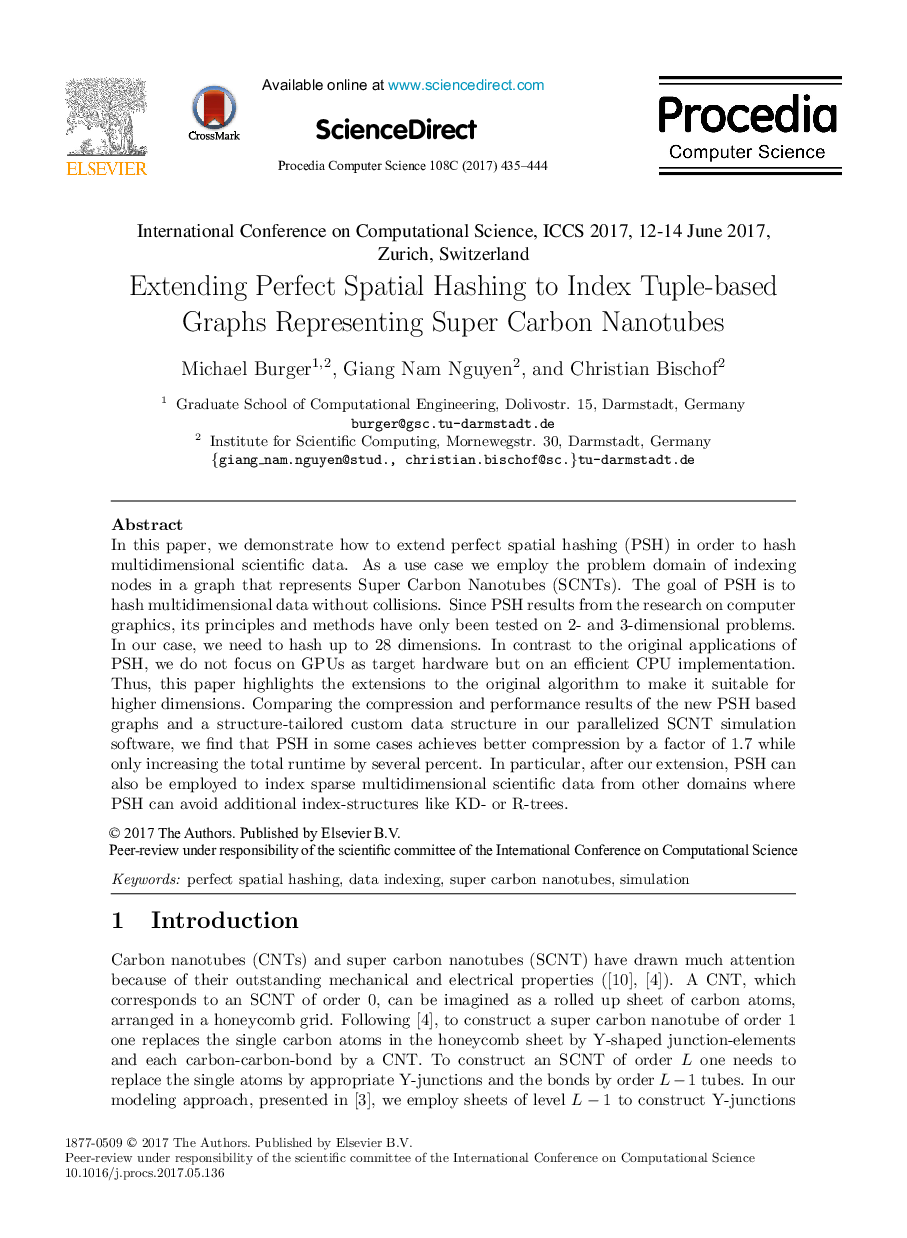| Article ID | Journal | Published Year | Pages | File Type |
|---|---|---|---|---|
| 4960974 | Procedia Computer Science | 2017 | 10 Pages |
In this paper, we demonstrate how to extend perfect spatial hashing (PSH) in order to hash multidimensional scientific data. As a use case we employ the problem domain of indexing nodes in a graph that represents Super Carbon Nanotubes (SCNTs). The goal of PSH is to hash multidimensional data without collisions. Since PSH results from the research on computer graphics, its principles and methods have only been tested on 2- and 3-dimensional problems. In our case, we need to hash up to 28 dimensions. In contrast to the original applications of PSH, we do not focus on GPUs as target hardware but on an efficient CPU implementation. Thus, this paper highlights the extensions to the original algorithm to make it suitable for higher dimensions. Comparing the compression and performance results of the new PSH based graphs and a structure-tailored custom data structure in our parallelized SCNT simulation software, we find that PSH in some cases achieves better compression by a factor of 1.7 while only increasing the total runtime by several percent. In particular, after our extension, PSH can also be employed to index sparse multidimensional scientific data from other domains where PSH can avoid additional index-structures like KD- or R-trees.
